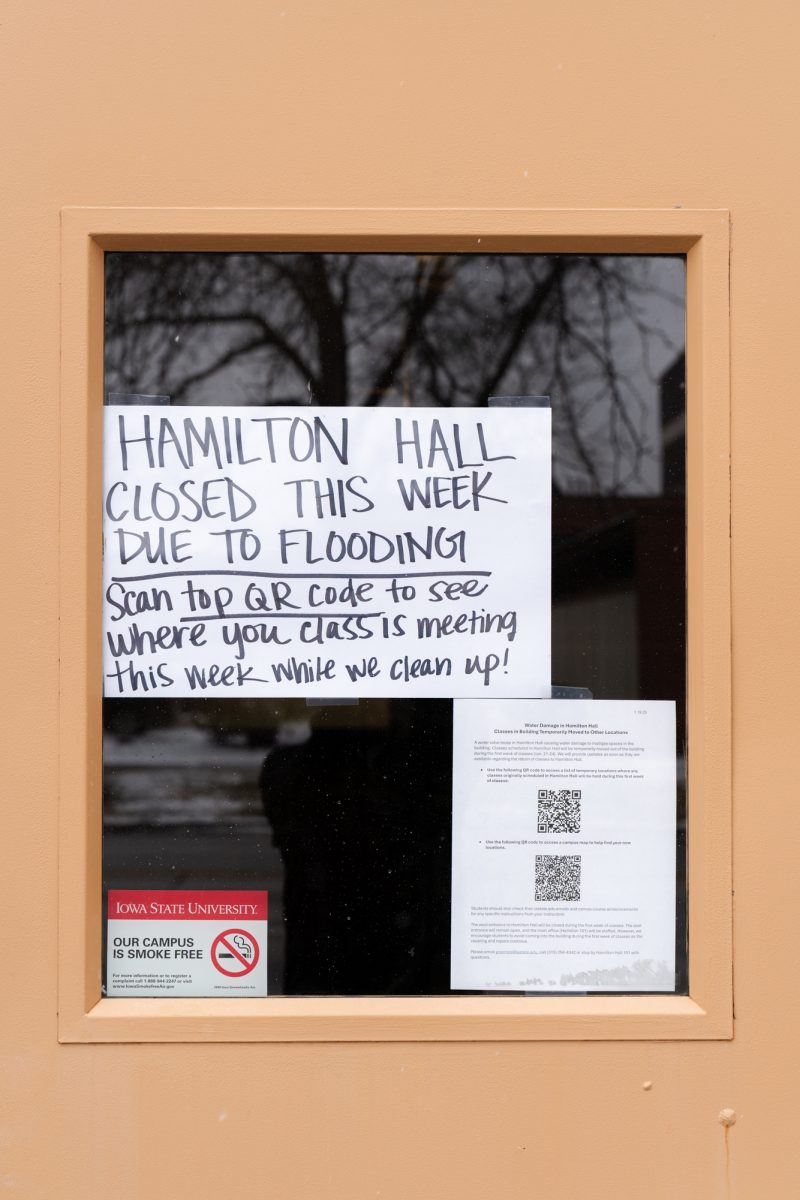Willow resident arrested, evicted for smoke bomb
February 21, 2006
A former Willow Hall resident mixed chemicals delivered to his university address and caused a fire that did not result in significant damage.
Steve Hamil, freshman in mechanical engineering, said he was attempting to synthesize fuel to make a smoke bomb around 8 p.m. on Jan. 27. The bomb was built in his Willow dorm room for a game of paintball.
Somehow, the fuel ignited and smoke filled the hallway, triggering the fire alarm. The ISU Police Department and the Ames Fire Department responded to the incident.
“It actually made the hallway – instead of smelling like gym shorts, it smelled like marshmallows,” said Hamil, who lived at 2265 Willow Arnquist.
Hamil said he didn’t intend to cause any harm.
“All I can really say is it was an accident,” he said. “It was kind of a bad place to do it, I guess.”
As a result of the incident, Hamil was charged with reckless use of fire or explosives, a serious misdemeanor. If found guilty, Hamil could face up to one year in jail and fines ranging from $250 to $1,500.
ISU Police Capt. Gene Deisinger said the fire “combusted out of control for a few moments and created a great deal of smoke.”
The smoky fire was not the primary distress for emergency responders after they entered Hamil’s room, Deisinger said.
“What was of concern to us was larger quantities of combustible materials,” he said. “It was certainly possible for it to have ignited.”
Matthew Mead, Arnquist resident and sophomore in chemistry, said he heard rumors circulating that Hamil was attempting to make claymore mines or smoke bombs, but he did not know whether these were true. Mead said he believed the situation became serious when he saw police tape off the hallway and confiscate items from Hamil’s room.
Deisinger said he currently doesn’t believe Hamil was attempting to build a bomb or another explosive device.
“At this point, it does not appear that particular item was intended as an explosive object,” he said.
“Evidence from other items seized that night are still under investigation.”
Chance Goddard, Arnquist resident and freshman in engineering, said he doesn’t know how the box of potassium nitrate made it past the hall desk.
“There was neglect on the university’s behalf, especially when it was clearly labeled on the side,” he said.
“He even told us he got it over the hall desk.”
Joseph Campos, Maple-Willow-Larch assistant hall director, said sometimes boxes are reused during shipments and that shipping companies each have their own policy for shipping chemicals.
“If there was anything I thought was hazardous or potentially dangerous, I would call ISU Police,” he said.
Hamil said he assumed it was permissible for him to have the chemicals in his room after he successfully retrieved them from the Willow hall desk.
“I assumed if it was something [the Department of Residence] didn’t want me to have in there, they’d have stopped me,” he said.
Campos, graduate student in education leadership and policy studies, said although he has never seen a suspicious package, his staff is not instructed to look for them.
“They are not told to look for things out of the ordinary, but if they did have questions they’d come to me or one of the other hall directors,” he said.
Deisinger said other hall residents have started fires in the past.
“The irony is this is probably the third case in Willow Hall in the last two or three years,” he said.
Nine arson offenses were reported in residence halls on campus in 2004, according to the most recent figures available from ISU Police. That figure compares with one reported in 2003 and five in 2002.
Hamil said he was forced to move from Willow and now resides off campus.
“[The Department of Residence] assumed I was a threat, but I don’t see how that was possible,” he said.
Goddard said although he doesn’t think Hamil had any malicious intent behind the fire, he should have known better.
“When it comes down to it, he was in the dorms and he shouldn’t have been doing that,” he said.






